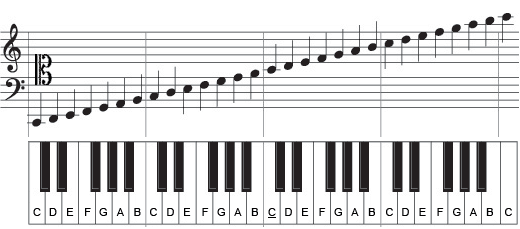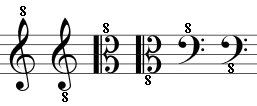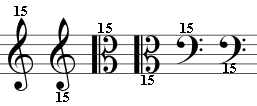- Treble clef (or G clef)
This clef is used by high pitched instruments, for example:
Accordion, clarinet, F horn, flute, guitar, oboe, piano, piccolo, sax and violin.
The mnemonic method to remember the order and names of the notes:
- FACE
- Every Good Boy Does Fine

- Bass clef (or F clef)
This clef is used by low pitched instruments, for example:
Baritone, bass guitar, bassoon, drum, piano, trombone and tuba.
The mnemonic method to remember the order and names of the notes:
- All Cows Eats Grass
- Good Boys Do Fine Always

- Alto clef (or C clef)
This clef is often used in music written for cello, bassoon and trombone.
The mnemonic method to remember the order and names of the notes:
- Good Boys Do Fine
- Fawns And Cows Eat Grass


Additional information:
In music scores, above and below the clef, the numbers 8 or 15 can be found.
These numbers are called octave markers.
If an 8 is placed above the clef, the music must be performed an octave higher than indicated.
If an 8 is placed below the clef, the music must be performed an octave lower than indicated.

If a 15 is placed above the clef, the music must be performed two octaves higher than indicated.
If a 15 is placed below the clef, the music must be performed two octaves lower than indicated.
